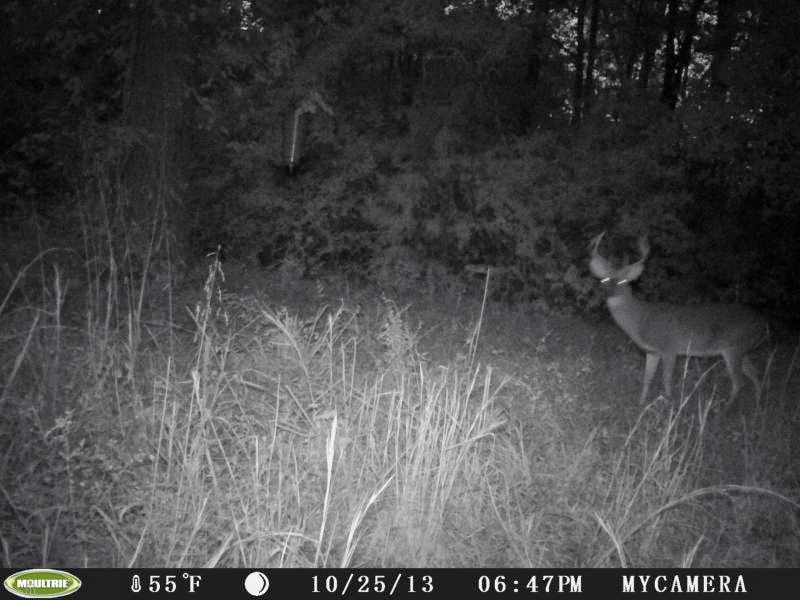Those of you who read this blog know that I like using a trail camera to evaluate hunting areas, to watch wildlife, and to catch cat-food thieves. This may be time to review a trail cam that I used last year, in case anyone is considering buying one, and to look at photos I've taken on the little camera.
Last year, Milady gave me a Moultrie D55 IR camera as a gift. I sat it aside for a while, then moved it to the family property to see what type of traffic I might see. With the loss of my deer lease this month, I've been going through the pictures on the camera and I have some observations that might be valuable.
First, there is a disturbing tendency for the older cameras to "white out" some photos. I've found that this happens most often during twilight, where the camera can't decide if it wants to shoot a photograph during those times when it can't decide if it's daylight or darkness. The Moultire doesn't have that problem. Of over 200 photos on that memory card, each of them was viewable. For example, this photo:
Of course, you can click on the photo for a larger view, but this pic was taken in mid-December, at 7:23 am, on what obviously was a foggy morning, the perfect time for a camera to "white out". Clearly, I can see a doe standing in the middle of the photo, a great job by the little camera.
Notice this photo, taken at 6:47 pm on Ocober 25th of a nice, shootable buck. What I find interesting is that we can see sky through the trees, and while the buck might not have been visible with a lesser camera, it might also have presented itself during the last available minutes of legal shooting hours. This is a great job by the camera in capturing an image that lesser camera's might have missed.
This picture really gets my interest, because it shows me the caliber of the deer that are using that meadow.
Taken in the wee hours of the morning, these deer are plainly nocturnal and I might never see them during a hunt, but the camera proves that they are there, so we have a healthy deer population in that area.
I really like this photo, taken in late May, or a deer that's just coming into velvet. That's a nice deer, and I suspect that I'll be looking for him during the coming months.
One other thing that surprised me about the Moultrie, is that it took pictures for seven months on the same set of batteries. My particular camera uses six C-cell batteries, and I only use Duracell in my cameras. It took this photo of me in early June, as I was taking the batteries out of it.
I really need to learn to turn the camera off when I take it off the tree. But, if you're looking for a game camera that displays time, date, temperature and moon phase, takes great pictures with great battery life, you could do worse than the Moultrie D55IR. For a $120.00 camera, it is a whole lot of camera.





3 comments:
I'll have to remember that one. Thanks!
Hello Pawpaw:
Does the "IR" in the name D55IR mean that the flash is infrared? As in, it would not be visible to a human interloper?
Best regards,
-Joe
The Infrared light emitter is visible to the naked eye. I've watched it light up and while it is visible, it's not really noticeable unless you're looking at it.
Post a Comment